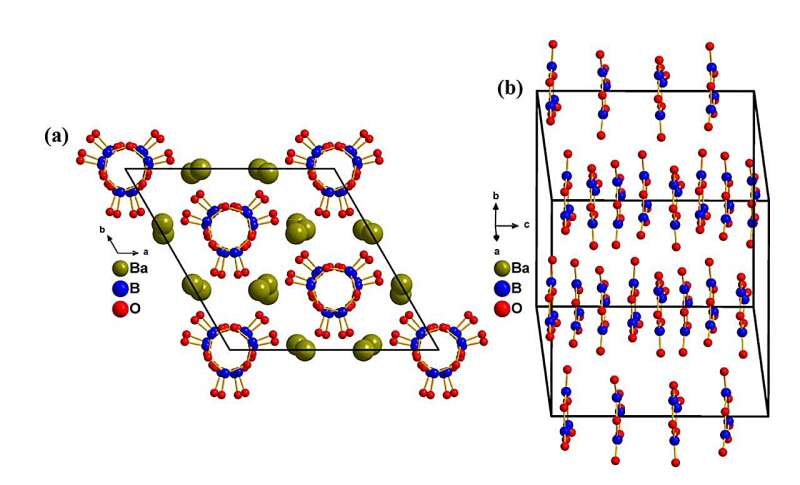This article has been reviewed according to Science X's editorial process and policies. Editors have highlighted the following attributes while ensuring the content's credibility:
fact-checked
peer-reviewed publication
trusted source
proofread
Researchers reveal nonlinear optical mechanism of β-BaB2O4 by experimental electron density

As a well-known ultraviolet (UV)-vis-near-infrared (IR) nonlinear optical (NLO) material in the borate system, β-BaB2O4 (BBO) has a wide range of applications because of its outstanding NLO performance. Further analysis of the electronic structure of BBO is warranted to clarify the disputes on the second harmonic generation (SHG) mechanism and NLO functional motifs of BBO.
X-ray diffraction with subatomic resolution can be adopted to directly study the electron density (ED) of a crystalline material. With the use of the multipolar atom model and quantum theory of atoms in molecules (QTAIM), the atom/orbital resolved ED and its topological characteristics can be analyzed with high-quality high-resolution X-ray diffraction. The atomic and macroscopic SHG coefficients of BBO can be evaluated from electrostatic moments.
In a study published in Advanced Optical Materials, the research group led by Prof. Guo Guocong from Fujian Institute of Research on the Structure of Matter of the Chinese Academy of Sciences revealed nonlinear optical mechanism of β-BaB2O4 by experimental electron density.
The researchers studied the experimental ED of a well-known NLO BBO crystal by high-resolution X-ray diffraction. They found that the [B3O6]3- motif dominates two large non-zero SHG tensors while Ba atoms contribute mostly to the smallest one, and the atomic SHG contributions of terminal O atoms in [B3O6]3- motifs are much larger than those of B and bridged O atoms, clarifying the disputes on its NLO response mechanism.
Also, they observed the weak covalent behavior of Ba-O interaction by deformation electron density. The SHG coefficients of BBO derived from experimental ED are in excellent agreement with those from bulk crystals, providing a high-efficient and low-cost method of screening high-performance NLO materials with just an easy-to-obtain tiny crystal.
Besides, the researchers performed theoretical periodic and molecular density functional theory (DFT) calculations of electron structures for an intuitive comparison.
This study proposed a general strategy for evaluating the atomic and macroscopic SHG coefficients of BBO from electrostatic moments.
More information: Long‐Qi Yang et al, Nonlinear Optical Mechanism of β‐BaB2O4 Revealed by Experimental Electron Density, Advanced Optical Materials (2023). DOI: 10.1002/adom.202301897
Journal information: Advanced Optical Materials
Provided by Chinese Academy of Sciences




















